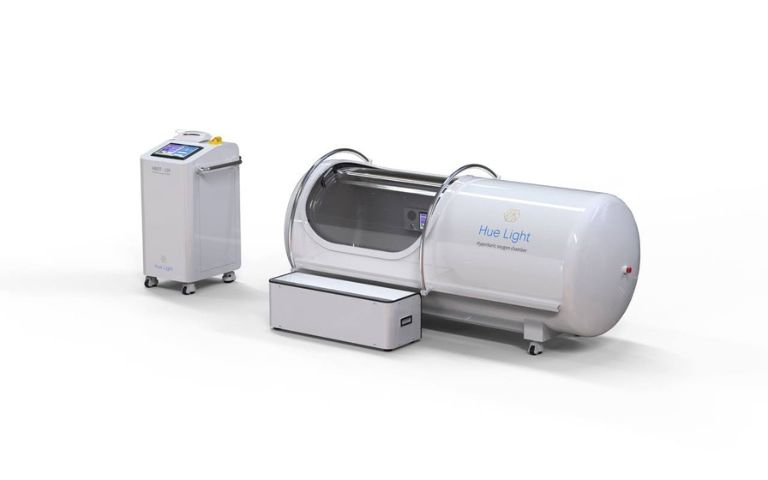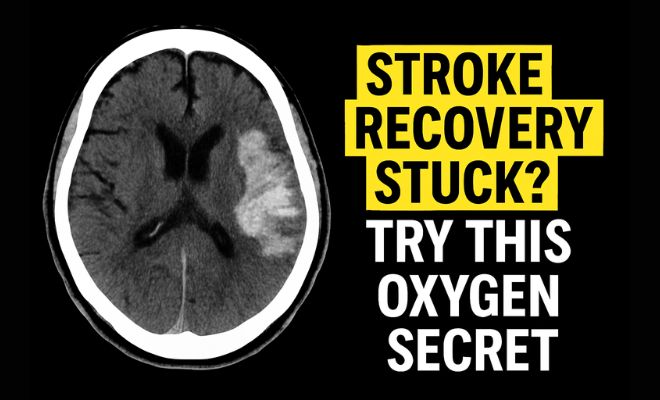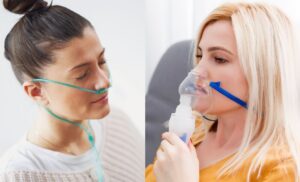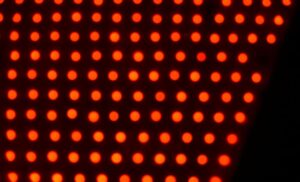In the United States, stroke is a major health concern that affects hundreds of thousands of people every year. According to the Centers for Disease Control and Prevention (CDC), about 795,000 people in the U.S. experience a stroke annually, and it is the fifth leading cause of death nationwide. Roughly 610,000 of these are first-time or new strokes, while the rest are recurrent events.
Every 40 seconds, someone in America suffers a stroke, and every 3.5 minutes, someone dies from one. Survivors often face lifelong disabilities, with stroke being a leading cause of serious long-term impairment. Recovery can be a lengthy and challenging process for patients and their families.
When Stroke Survivors Hit a Wall in Recovery

A stroke does not simply leave a person with minor physical difficulties. For many survivors, it marks the beginning of a completely different life, and for their families, it brings unexpected and overwhelming changes. According to studies in the United States, more than one-third of stroke survivors require ongoing help from others for daily activities such as walking, eating, or getting dressed.
Family members devote themselves to supporting the patient’s recovery, helping with movement, speech, and memory, often at great emotional and financial cost. As time goes by, the slow pace of progress and repeated setbacks can lead to growing anxiety and frustration.
Questions like “Will my loved one ever return to their former self?” and “Is current rehabilitation enough?” are constant worries. Feelings of hope and discouragement may come and go, sometimes within the same day. As a result, many stroke survivors and their families in the U.S. find themselves longing for something more than standard rehabilitation.
Isn’t there a better way? Could there be a new treatment that might unlock greater recovery?
With these hopes, they actively seek out medical professionals and new options that may offer improved outcomes and renewed optimism.
A New Hope: The Science and Real-World Evidence of Hyperbaric Oxygen Therapy (HBOT)
What Is Hyperbaric Oxygen Therapy (HBOT)?

HBOT involves inhaling 100% pure oxygen in a special chamber where the air pressure is two to three times higher than normal atmospheric pressure. This allows a much greater amount of oxygen to dissolve into the bloodstream, delivering it deeply into tissues, including damaged areas of the brain.
HBOT is gaining increasing attention in the United States and globally as a promising option for stroke survivors who have reached a plateau with conventional rehabilitation.
How HBOT Works: Oxygen Pressure, Tissue Regeneration, and Neural Activation
The core of HBOT is a dramatic increase in oxygen partial pressure within the blood.
Under high pressure, oxygen dissolves far more readily into the plasma, reaching even the smallest blood vessels and the most oxygen-starved tissues.
This activates mitochondria within neurons, stimulates the growth of new blood vessels (angiogenesis), reduces inflammation, and helps rebuild neural networks.
As a result, HBOT creates an environment where “dormant” brain cells after a stroke can regain function and begin to recover.
Clinical Improvements Seen with HBOT
In real-world practice, HBOT has been shown to provide measurable improvements in major stroke-related disabilities, such as paralysis, speech difficulties, and cognitive impairments.
- Enhanced blood flow
- Reduced inflammation, neural regeneration, and restoration of brain connectivity all contribute to functional recovery.
For many patients who have reached the limits of traditional therapy, HBOT can offer a renewed chance for progress.
Even Years After a Stroke, Is Recovery Still Possible?
A Groundbreaking Discovery by Israeli Researchers
For many stroke survivors, the passage of time often feels like the end of hope.
The longer it’s been, the harder recovery seems.
But a research team in Israel challenged this very belief, and their findings were eye-opening. In 2013, researchers at the Assaf Harofeh Medical Center conducted a study involving 74 chronic stroke patients, most of whom had suffered a stroke 2 to 3 years prior. They administered a total of 40 sessions of Hyperbaric Oxygen Therapy (HBOT) over 2 months.
The results were published as a randomized, prospective trial in the journal PLOS ONE.
View the study
What changed after the treatment?
- Neurological function (NIHSS) showed significant improvement.
- Activities of Daily Living (ADL) were noticeably enhanced.
- Self-reported Quality of Life (QoL) scores also improved across the board.
- Most remarkably, SPECT brain imaging revealed reactivation of previously dormant brain regions.
This study sends a powerful message that even years after a stroke, Hyperbaric Oxygen Therapy still holds the potential to reignite recovery.
What Pressure Level Is Effective for Stroke Patients?
Therapeutic Effects of HBOT by Pressure Range
Hyperbaric Oxygen Therapy (HBOT) is typically administered at pressures ranging from 1.5 to 3.0 ATA. For stroke patients, the 2.0–2.5 ATA range is most commonly used.
| Pressure Range | Applicable Conditions | Expected Effects |
| 1.5–2.0 ATA | Chronic wounds, diabetic foot ulcers, radiation-induced tissue damage | → Increases oxygen solubility, reduces inflammation and promotes tissue regeneration |
| 2.0–2.5 ATA | Post-stroke recovery, traumatic brain injury, burns, infections | → Enhances oxygen delivery to brain tissue, reduces inflammation and promotes neural regeneration |
| 2.5–3.0 ATA | Decompression sickness, carbon monoxide poisoning, gas embolism (emergency use) | → Accelerates oxygen diffusion, eliminates harmful gas bubbles |
In stroke patients, treatments in the 2.0–2.5 ATA range have been associated with:
- Restoration of damaged brain cells, reduced inflammation, improved blood flow, and enhanced cognitive and motor function.
Is HBOT Safe? Simple Tips for First-Time Patients
Hyperbaric Oxygen Therapy (HBOT) has been used for decades to treat various medical conditions and is widely regarded as a safe and well-established treatment. However, for those experiencing the pressurized environment for the first time, it’s common to feel a mild sense of ear pressure or fullness during the session.
The Most Common Sensation: Pressure in the Ears
As the chamber gradually increases in pressure, the air outside the ear becomes denser than the air inside the middle ear. This creates a feeling of ear fullness or slight blockage, similar to what many people feel during airplane takeoff or landing.
In most cases, this can be easily relieved by yawning, swallowing, or performing a gentle Valsalva maneuver (pinching your nose and gently exhaling). Some treatment centers may also recommend pressure-regulating earplugs to make the adjustment even easier.
No Need to Worry: It Gets Easier with Guidance and Practice
Since HBOT chambers are pressurized slowly and gradually, most patients adjust quickly with minimal discomfort. Before the first session, patients receive clear instructions and simple training on how to equalize ear pressure.
Looking for a Trusted HBOT Solution? Discover HueLight’s Advanced Chamber
If you’re considering HBOT as part of stroke recovery or other health support, the quality and safety of the equipment matter.
HueLight offers a state-of-the-art hyperbaric oxygen chamber, designed to deliver therapeutic pressure ranges from 1.5 to 3.0 ATA, making it suitable for both chronic and acute conditions such as post-stroke rehabilitation, diabetic wounds, and more.
The chamber is equipped with:
- A comfortable bed-type design that allows patients to relax during sessions
- Automatic pressure control for safe and gradual pressurization
- UV-C sterilization, Bluetooth connectivity, and app-based external control for ease of operation and hygiene
HueLight’s commitment to innovation and patient safety makes it a trusted choice for healthcare professionals and wellness centers.
Related Article: Hyperbaric Oxygen Therapy at Home
Conclusion
Hyperbaric Oxygen Therapy (HBOT) is emerging as a science-backed option for stroke survivors whose recovery has plateaued.
Clinical studies have shown that HBOT can promote the healing of damaged brain cells, reduce inflammation, and support improvements in both cognitive and motor functions. For patients who have hit a wall with traditional rehabilitation, this therapy offers a new pathway forward.
To ensure safe and effective treatment, the quality of the equipment used also plays a vital role. HueLight provides advanced hyperbaric oxygen chambers with adjustable pressure levels up to 3.0 ATA, creating optimal therapeutic environments for a range of conditions, including post-stroke recovery.
If you’re searching for a new solution in stroke rehabilitation, consider the proven science of HBOT, combined with HueLight’s technology and commitment to care.












